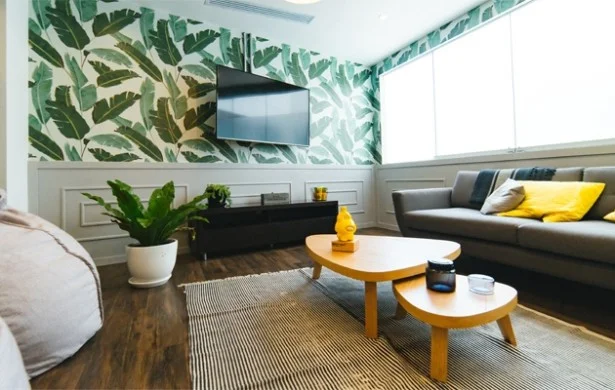When it comes to the workplace, productivity has traditionally been the watchword. Historically, designs were meant to optimise output like in an open-plan factory, but over the past decade, and increasingly over the past five years, that focus has changed. And our always-on, technology driven work culture is now prompting the realisation that all that screen time isn’t exactly good for us.
The more technology we integrate into our lives, the more we seem to feel its negative impact – the average UK adult spends 24 hours online a week at home and work, according to Ofcom’s latest report on media use – yet four in ten of us believe we’re spending too much time online. Our understanding of the impact of being tied to our phones is growing: studies have shown that blue light frequently given off by our devices, particularly our phones, can alter our bodies’ natural rhythms, making us feel more tired and having potential links with the development of serious diseases. Even on a personal level, we’re increasingly sensing the backwash on our wellbeing, with a survey by LED Hut in January showing that 77% of respondents felt lighting in the workplace had an impact on their productivity.
It’s not just the personal impact that’s putting increased focus on designing for wellbeing – the financial implications are providing an impetus too. A UK government review, estimated that a poor mental health contributes to between £33billion and £42billion of lost costs to employers every year. Highlighting the figures and research on mental health, British Land’s Design for Life study in 2018 showed design plays a huge role in stress levels, from noise levels and access to nature to the number of sharp angles and blank walls in a space. Making workplaces more pleasant, collaborative, and relaxed spaces are part of the brief for reducing stress at work, ultimately resulting in a happier workforce.
This month’s announcement of Britain's healthiest workplaces, an award run by insurance provider Vitality, is one clear signal of the change in mentality – the prizes take into account both the health of employees as well as the workplaces in terms of wellbeing facilities and company culture. The findings highlight ways in which effective office design helps employees’ health, from sleep pods that enable revitalising naps that enable revitalising naps, to providing outdoor areas and space to hold fitness classes.

